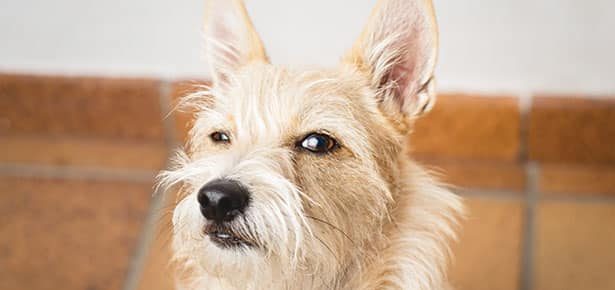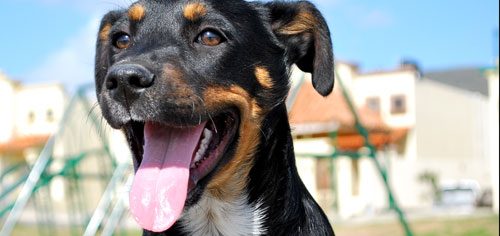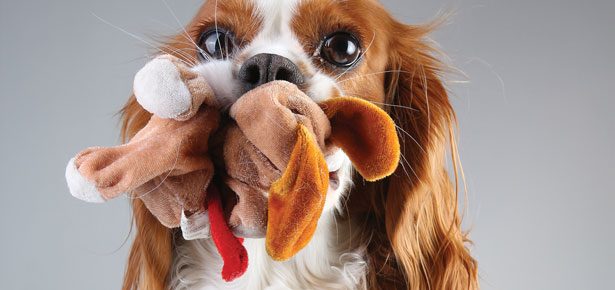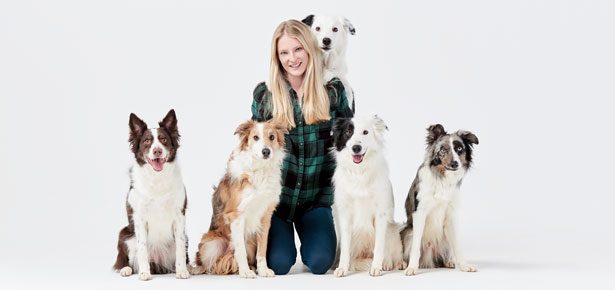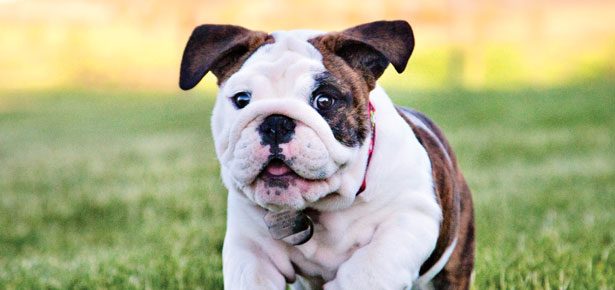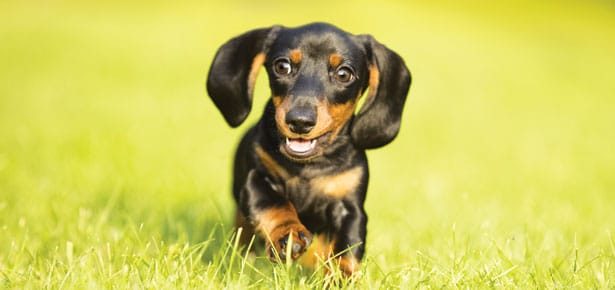
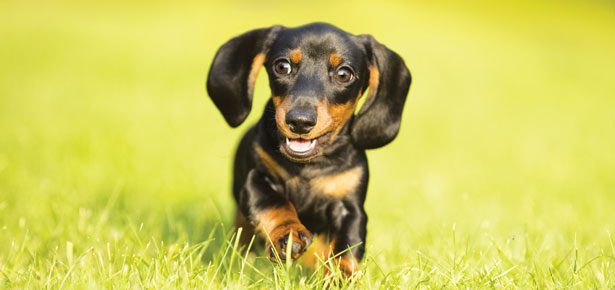
How to Socialize Your New Puppy!
From who to introduce your dog to, to when, here’s how to get your pup off on the right paw.
So, you’ve got a new puppy and you want to do everything right. You choose a high quality food, provide your pup with safe and stimulating toys, potty train him, and begin to teach house manners. Being a savvy owner, you’re also already thinking about how to prevent future problems. One of the biggest issues faced by dog owners is when adolescent and adult dogs don’t get along with unfamiliar dogs or people. Luckily, there are things you can do now to help ensure your dog will be social with strangers—both canine and human—and won’t become fearful of unfamiliar things or places. Here’s how to get him off on the right paw.
The generally accepted window of optimum socialization in puppies is between the ages of four and 12 weeks. During that time, if a puppy is exposed to unfamiliar people, dogs, places, types of flooring, sounds, and more, he is less likely to be afraid of—and in the case of unfamiliar dogs and people, reactive toward—those things later in life. That does not mean socialization cannot occur after this early period, but that the later socialization happens, the more challenging it can be. Veterinarians traditionally advise that puppies not be allowed around other dogs or places sick dogs might have been until the age of 16 weeks, when vaccinations are complete. But while there is a real risk of diseases like parvo and distemper that are easily spread and can be fatal, and caution is necessary, you don’t want to avoid all other dogs. The trick is to socialize selectively. (By the way, the place you’re most likely to find sick dogs is at the vet’s office, so bring your pup in a crate or carrier or, at the least, keep him off the waiting room floor.)
If you know someone who has an adult dog who is good with puppies, ask if you can get the dogs together at your home or theirs.
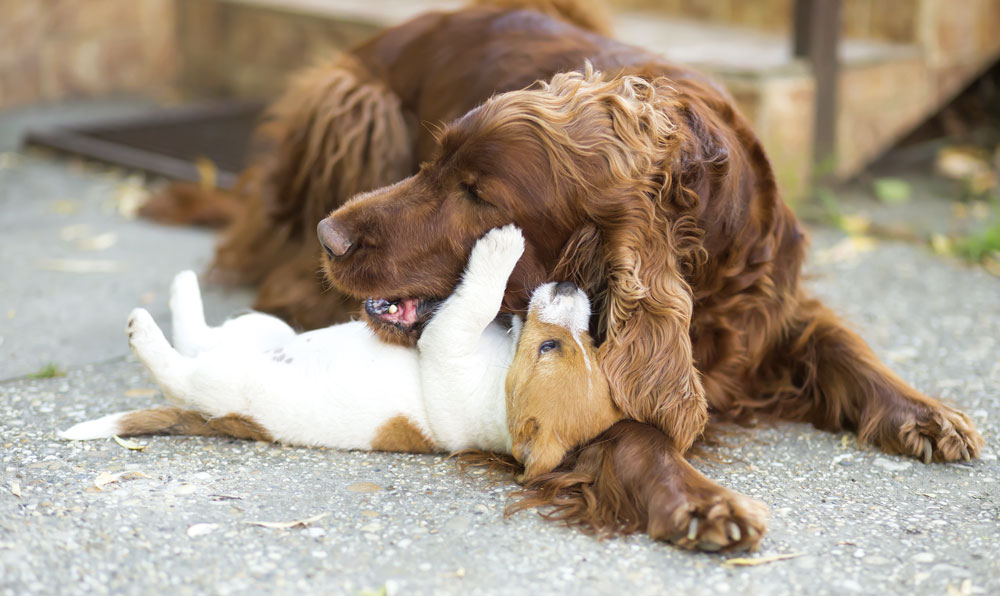
Reddogs/Bigstock
A healthy, well-adjusted adult female dog who is good with pups is the gold standard for socializing puppies. The pup will paw, mouth, and display other puppy-obnoxious behaviours which the adult female will allow…up to a point. She will then put the youngster in his place. That’s the best thing that could happen to a puppy! The pup then learns to knock it off and respect the boundaries of other dogs. This is important because as pups grow into adolescents and then young adults, their puppy license expires and other dogs are less likely to dismiss obnoxious behaviour. This can result in fights if your now-adolescent dog hasn’t learned to heed the warnings of other dogs.
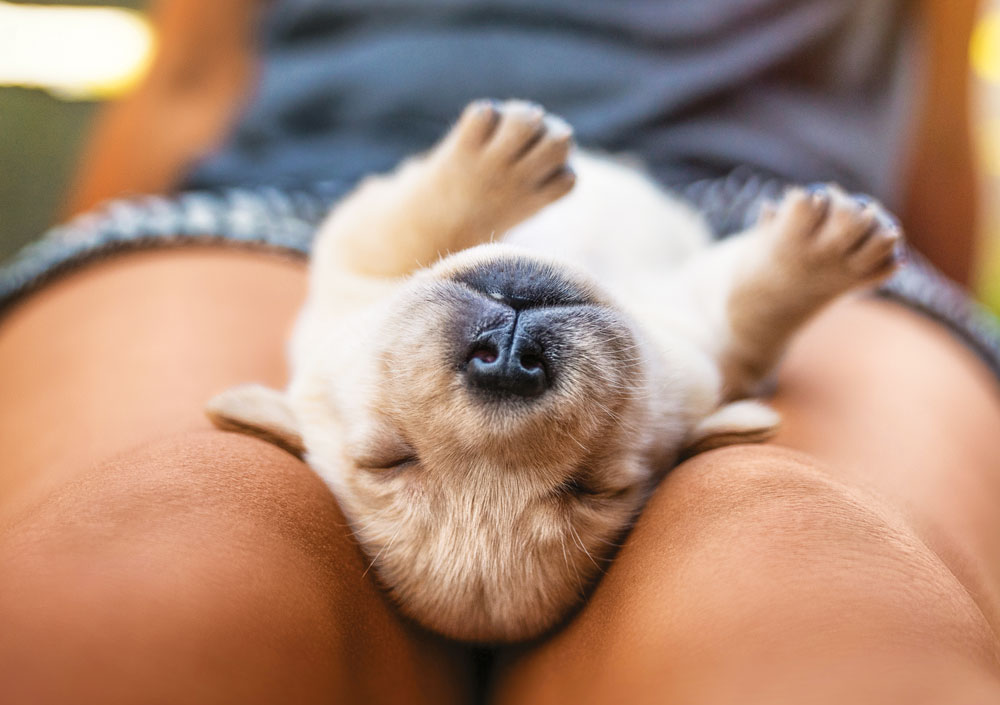
manushot/Bigstock
If you’re unable to set up this type of meet and greet, look for a puppy socialization class. Many modern trainers will allow puppies who have had a minimum number of vaccinations—normally two or three rounds—into class, as they understand the importance of early socialization. Look for an organized, well-run class that is small enough so that each student can receive personal attention. If the pups are allowed to interact and play with each other, be sure it’s not a free-for-all, but consists of careful pairings and attention paid to body language and comfort levels.
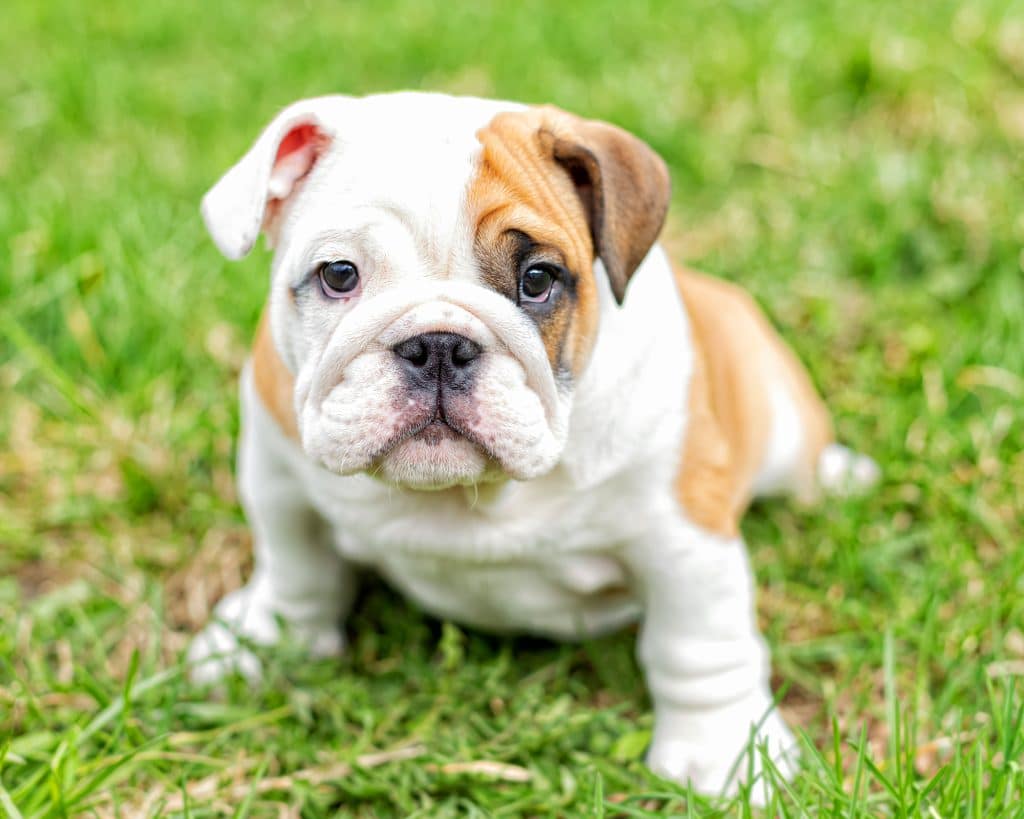
Aleksandr Gavrilov/Bigstock
It must be mentioned that one place you should not take your pup is to the dog park! Not only is there a chance of your puppy contracting a disease either from other dogs or from the drinking water, but most dog parks are completely unsupervised and open to all. Untested dogs of all temperaments are running wild. What could go wrong? Plenty! Along with fearful dogs and friendly dogs, you’ll encounter dogs who will bully other dogs or worse. All it takes is one bad experience early on for a dog to develop a lifelong reactivity issue toward other dogs. Socialize your pup with other dogs—just do it safely.
“A healthy, well-adjusted adult female dog who is good with pups is the gold standard for socializing puppies.”
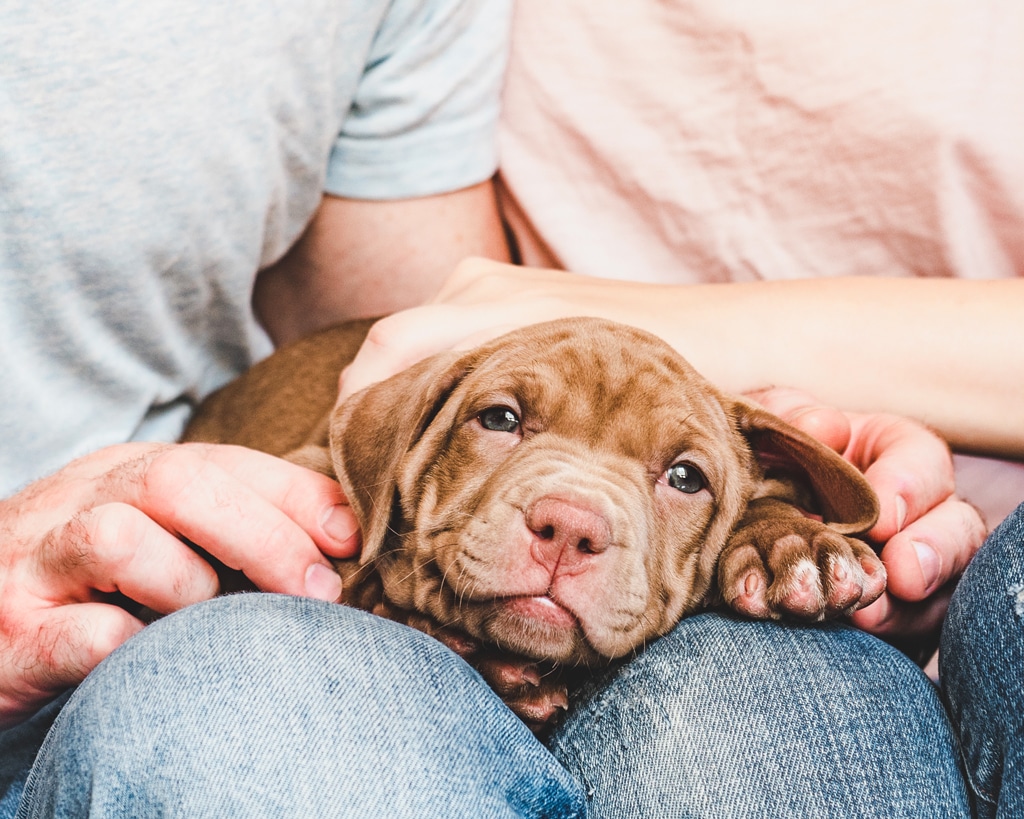
Svetikova/Bigstock
You’ll also want to introduce your pup to new people. It’s tempting when bringing home an adorable ball of fur to want to show him off to all of your friends and take him everywhere. While it is good for him to meet new people, don’t overwhelm him. One or two people at a time is fine. Allow children who are calm around dogs to meet your pup, but explain first what to do and not to do, including how to approach and pet so as not to scare him. Kids should let your puppy come to them instead of approaching him, and then hold a fist down toward his chest to let him sniff their hand. If your pup seems like he wants to interact, they can pet him gently, starting on the chest. Things to teach kids and adults to avoid include approaching palm-down over the pup’s head to pet, pulling at any part of the puppy, or hugging him. Introduce your pup to a variety of kids and adults. He should meet males and females, tall and large people as well as smaller ones, people of different colours, men with facial hair, people who walk with a limp or a cane, people wearing uniforms…you get the idea. Also include people who are wearing hats and/or sunglasses. It’s not uncommon for either of those things to scare dogs, especially if they haven’t seen them before. A hat changes a person’s silhouette, and sunglasses make us look like we have five-inch pupils!

Gerain0812/Bigstock
Get your puppy out and about, avoiding places that are heavily trafficked by other dogs. Pups should get accustomed to bicycles, cars, trucks, planes flying overhead, and whatever else they might encounter in your area. For a city dog, that might include skateboards, scooters, statues and other structures, walking over metal grates, the sound of the garbage truck, and more. A country dog might need to get accustomed to being around chickens, cows, or horses, and the sounds of weed whackers and other equipment such as tractors. Also, in addition to walking on tile or carpeting indoors, get your puppy used to walking on different substrates outdoors such as grass, asphalt, and gravel.
There is so much more that should be done with young puppies, such as handling exercises, those to prevent him resource guarding issues. Stay tuned for articles on those subjects, but in the meantime, make socialization a priority.
Join the newsletter and never miss out on dog content again!
"*" indicates required fields
By clicking the arrow, you agree to our web Terms of Use and Privacy & Cookie Policy. Easy unsubscribe links are provided in every email.

